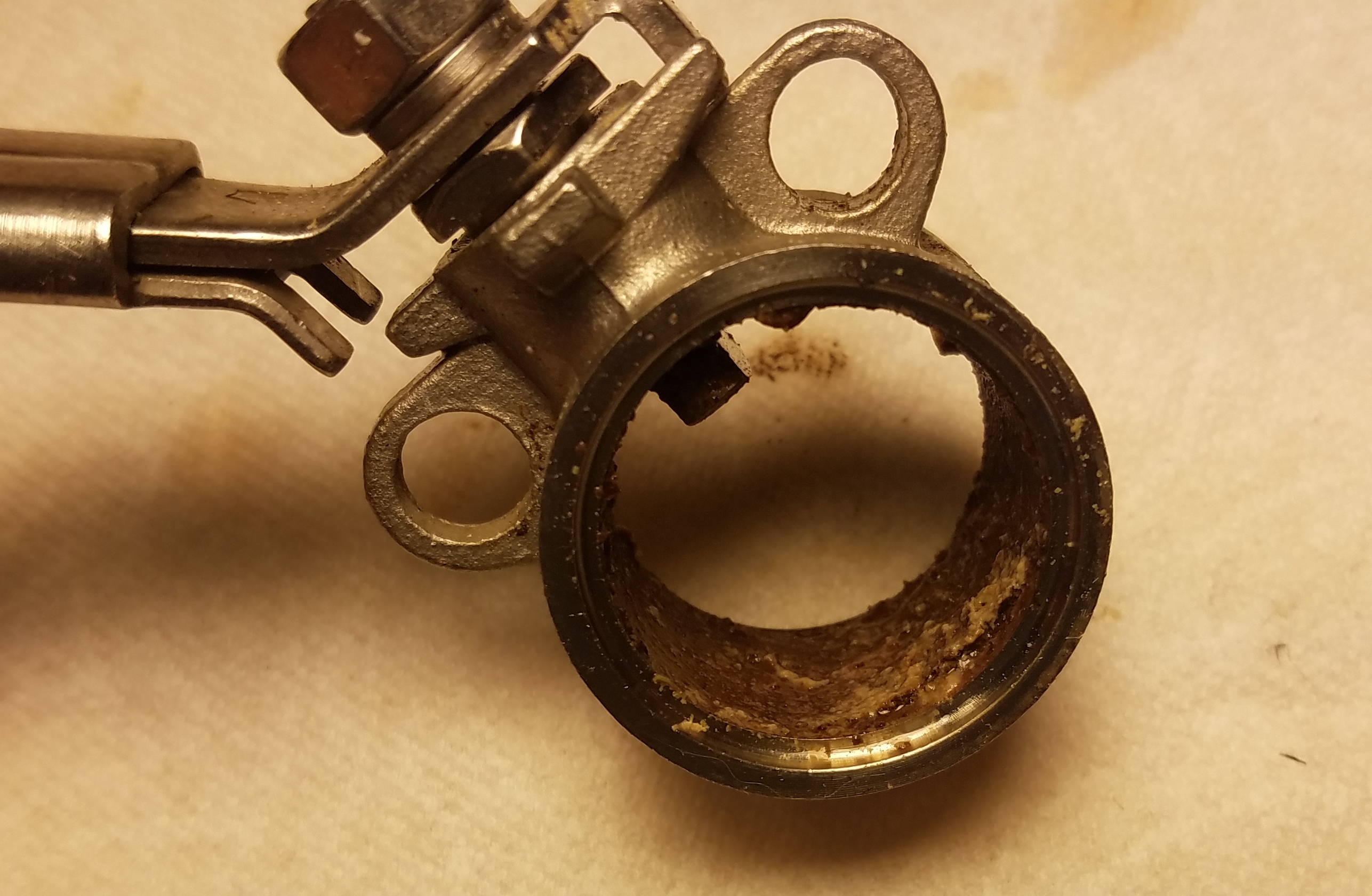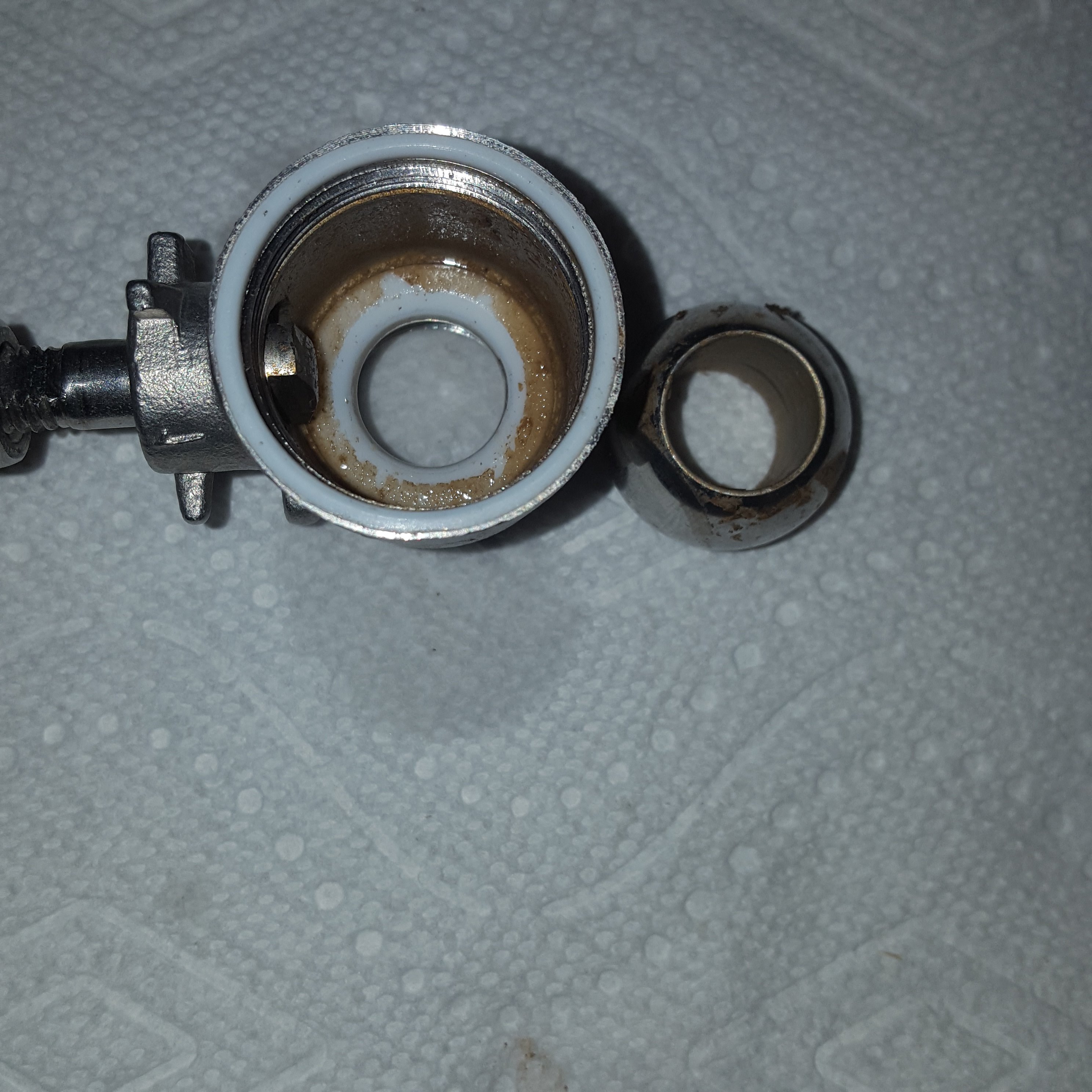fendersrule
Well-Known Member
- Joined
- Oct 11, 2018
- Messages
- 703
- Reaction score
- 342
Just like title says.
Do you do it after every brew?
Every other brew?
Do you do it after every brew?
Every other brew?












yeah thats gross... but to be fair, without explaining what was or wasnt done prior to that pic as far as setup and cleaning process it doesnt paint much of a picture. thats also a valve design that seems to have a lot of dead space trapped in it.

To be fair about what? I wasn't indicating anything with this, just noting that my three piece ball valve got disgustingly filthy. I just thought it was funny.yeah thats gross... but to be fair, without explaining what was or wasnt done prior to that pic as far as setup and cleaning process it doesnt paint much of a picture. thats also a valve design that seems to have a lot of dead space trapped in it.
Well a lot of people seeing that would immediately see it as evidence for needing to disassemble and manually clean between each brew session is all I was getting at.. I'm not trying to be disrespectful just trying to put a broader perspective on it for consideration that we dont know how it got that way.. It might actually help to know how it did for the point of the conversation of how much is needed and why right?To be fair about what? I wasn't indicating anything with this, just noting that my three piece ball valve got disgustingly filthy. I just thought it was funny.
but moving boiling pbw and liquids while actuating the valve open and closed would clean it out as well as many can clean out the inside of thier CFC or plate chilllers right? It sort of silly to me to disassemble and scrub everything on the hot side each time only to be flushing out the chiller that actually sees post cooled wort with pbw and hot water and calling it a day dont you think?Once in a while. I'm doing a recirculation with hot PBW solution so the insides are quite clean.
I use a counterflow chiller; during the process of brewing I pre-boil the water (LODO technique), and send that boiling water through the CF chiller. That way I'm sanitizing everything even before wort comes into contact with it. Same thing with running the boiling wort through it all--sanitized.
@grampamark 's pic above might motivate me to take things apart, just to see, but as he notes, it's all sanitized by running boiling liquid through it, and I don't have any reason to presume there's accumulated junk in there that wouldn't have been cleaned out by either the PBW or boiling liquids.
well bronze in exposure to beer often turns black and gets rather nasty from the ph.I hadn't taken my Bronze ball valve apart for years. I thought rinsing will would get the crud out. Boy! was I wrong. Mine looked much worse than the pictures above. Right after that I got a 3 piece ball valve. I don't clean it every time but maybe after about three batches. For the weldless fitting, I am not so concerned about it. The crud part of that is on the inside of the pot and boiling should take care of any nasties there. I will take it apart at some point, but much less often than the valve.
well bronze in exposure to beer often turns black and gets rather nasty from the ph.
Just like title says.
Do you do it after every brew?
Every other brew?
Because me saying I only ever cleaned mine once is advocating a cleaning every brew? That seems like a stretch.Well a lot of people seeing that would immediately see it as evidence for needing to disassemble and manually clean between each brew session is all I was getting at.. I'm not trying to be disrespectful just trying to put a broader perspective on it for consideration that we dont know how it got that way.. It might actually help to know how it did for the point of the conversation of how much is needed and why right?
I do not follow what your saying at all, or why your being so argumentative. I commented on the picture that was shared. I dont see where you said you only cleaned it once but yes that can make sense as to why it could be so nasty looking. If you had shared that useful info I wouldnt have even made the "to be fair" statement.Because me saying I only ever cleaned mine once is advocating a cleaning every brew? That seems like a stretch.
I don't think it is fair that you misreading my initial post is me being argumentative. I very specifically answered the OPs question. Re-read my post that you quoted, that should clear things up.I do not follow what your saying at all, or why your being so argumentative. I commented on the picture that was shared. I dont see where you said you only cleaned it once but yes that can make sense as to why it could be so nasty looking. If you had shared that useful info I wouldnt have even made the "to be fair" statement.
Theres one extreme to another with many folks cleaning them once in a while or pushing pbw through while actuating the valve open and closed to flush out the dead space in the ballvalve. Thats the point behind why the OP asked the question I believe.. to get an idea of what others are doing and what kind of success they are having with what they do.. Thats why other folks like grandpamark shared useful info about the pic they shared.. So people dont just guess or assume what they want and we get some useful info here that may help one way of the other.
I didn't really have a cleaning process, aside from running a brush through the orifice. All this stuff was between the housing and the ball, as @augiedoggy mentioned about the deadspace. My assumption is a seal or two is busted, so when fluid is running through it, solids began to build up. I think I'll take it apart this weekend and see if there is any build up from when I took it apart last.Wow thats crazy. I'm gonna take a look at mine but I'd be curious about your cleaning process and also wondering how close this valve is to the heat source when you brew.
It's the same as the philosophical tree falling in the woods....if you don't pull your valves apart there's no crud in them.
I've never done it. I also never clean anything on the hot side with more than a hot water rinse.